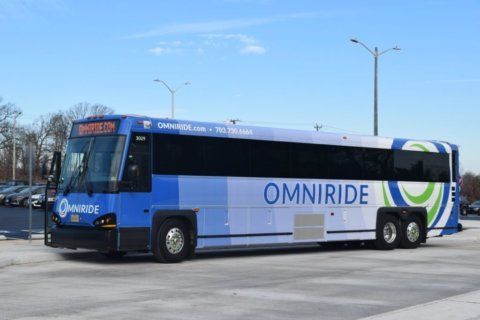This article was written by WTOP’s news partner InsideNoVa.com and republished with permission. Sign up for InsideNoVa.com’s free email subscription today.
Prince William County is putting the finishing touches on its vision for the next 18 years.
At its meeting Nov. 9, the Planning Commission recommended approval of the final three chapters of the Comprehensive Plan update.
The Comprehensive Plan is a guiding document for county land-use policies. While not committing the Board of County Supervisors to any decisions, it declares the county’s vision for future development through 2040. It is broken into five chapters.
In October, the commission recommended approval of the land-use and electrical services chapters of the plan with nearly a dozen changes aimed at putting further limitations on residential density.
The mobility, housing and sanitary sewer chapters of the plan were scheduled for a vote in October but were delayed until Wednesday.
Mobility
The mobility chapter covers various transportation initiatives, including road projects, sidewalks and trails. The update makes a variety of changes since it was last updated in 2010.
The update only added one road widening, which would extend Pageland Lane from two to four lanes between Sudley Road and U.S. 29. The project was partly spurred by the proposed PW Digital Gateway, which recently received preliminary support from the Board of County Supervisors.
The gateway plans up to 27.6 million square feet of data centers on 2,100 acres along the road.
Most of the discussion around the mobility chapter was about opposition to the only two new road extension projects.
The first was an extension of Heathcote Boulevard in the Haymarket area to connect with Antioch Road.
The proposal would extend Heathcote beyond the University of Virginia Haymarket Medical Center and could cost $23.4 million.
Gainesville Commissioner Richard Berry was concerned about the impact on a longtime landowner in the area and directed county staff to minimize complications related to right-of-way acquisition and the path of the road.
The second project was an extension of Peaks Mill Road in the Hoadly area to connect with Prince William Parkway, which is Va. 234, on one side and Purcell Road on the other.
An early estimate for construction is $40 million.
Several people who live in the area were concerned it would create a cut-through from Purcell to the Parkway, while others were worried it would increase hazards on an already dangerous stretch of Purcell.
“I have been on Purcell Road, and it seems like the whole road is not very well-constructed,” said Neabsco Commissioner Qwendolyn Brown.
Transportation Director Rick Canizales said the Board of County Supervisors directed staff to look at ways to alleviate traffic on Purcell Road without widening it.
Canizales said the connection with Peaks Mill Road would be made on a large curve of Purcell Road, which has been a dangerous stretch. It would add a signal in the curve, causing drivers to slow down, he said.
Several speakers were worried Peaks Mill Road would be widened, but Canizales said it would remain a two-lane road.
“We’re not widening the road,” he said. “We’re talking traffic calming if and when we build the road.”
After At-Large Commissioner Patty Kuntz made a motion to recommend approval of the transportation plan as it was presented, Coles Commissioner Joseph Fontanella Jr. made a motion to remove the Peaks Mill Road extension from the plan.
Fontanella’s motion failed 3-5 and the commission voted 7-1 to recommend approval, with Fontanella as the dissenting vote.
Housing, density
The commission unanimously recommended approval of the plan’s housing chapter, which outlines the county’s expectations of residential development proposals and vision through 2040.
One of the controversial elements of an initial proposal was to increase density in what’s known as the “rural crescent” – roughly 117,000 acres restricted to no more than one home for every 10 acres with strict prohibitions on the expansion of public sewer lines.
The draft plan called for increasing that density to one home per five acres, but planners have walked back that proposal and kept the guidelines of one house per 10 acres.
The main point of discussion Wednesday was on affordable housing.
The county is working on an affordable housing ordinance, but until it is developed, a section of the housing chapter about affordability would serve as the first guidelines for developers.
The document says about 20% of proposed developments should include affordable housing no matter its location, as well as a variety of regulations about income limits and locations.
Some of the critics of the initial plan said it was pointless to put affordable housing in rural parts of the county because there’s no access to reliable public transportation.
Kuntz, however, said the argument was just a barrier to addressing the county’s needs.
“These are our teachers, these are our police officers,” she said. “Transit is not necessary to have affordable housing in this county because they have cars … There are people who need affordable dwelling units in every part of this county.”
Several representatives of Virginians Organized for Interfaith Community Engagement, a regional collective of clergy, called on the county to have more measurable guidelines for reaching its affordable housing goals. They called for a reduction in all affordable housing shortfalls of 60% by 2030, 80% by 2035 and 100% by 2040.
“This ambitious goal gives us something to aim for so all residents of Prince William County can have access to housing that’s affordable and attainable,” said the Rev. Mandy North of the Manassas Church of the Brethren.
Brentsville Commissioner Tom Gordy said the county needs to put more financial incentives and investment into building affordable housing.
“All of us believe that we need affordable housing in Prince William County,” he said. “I’m just not convinced that the plan we have before us is going to get us there. I think we’ve got to figure out a better way to build a trust fund to encourage investments.”
Joan Duckett, director of the county’s Office of Housing and Community Development, said the county has a fund that is supported by monetary contributions from developers, but it’s “very small to say the least.”
“There’s not an overabundance of funds,” she said.
Sewer expansion
The planned changes to allow expansion of public sewer throughout the county continued to move forward.
The commission voted 5-3 to recommend approval of the sewer chapter, with Fontanella, Gordy and Gainesville Commissioner Richard Berry casting dissenting votes.
The dirty business of sewer has been a central player in the debate over the rural area.
The 1998 restrictions on sewer in rural parts of the county have served as a roadblock to larger developments, which would require the more cumbersome septic systems used by most dwellings in the rural area.
The issue has been simmering since supervisors voted along party lines in January 2021 to approve the Preserve at Long Branch, a 99-home development in the rural area.
The board’s Democratic majority has voted to direct county staff to allow public sewer anywhere in the county, and that is reflected in the proposed update to the Comprehensive Plan’s sewer chapter. If approved, it could signal to developers that the county would start allowing more development.
Preservationists have argued that once access to the county’s sewer system is extended into the rural area, developers will build off it to add more housing, eschewing the more cumbersome septic systems used by most dwellings in the rural area.
“The concern that I have is that this would serve as the foundation to change the rural areas into suburbia and create costly infrastructure needs for schools when many are at capacity or over capacity,” Berry said.
Gordy said the expansion of sewer should wait until the completion of a study of water quality in the Occoquan watershed from the Northern Virginia Regional Commission requested by the Board of County Supervisors in August.
Brown said the policy would allow the county to reduce failing septic systems.
“Allowing people to connect to a public system,” she said, “it really does help control and improve the quality of water in the county and it allows the sewer authority to properly treat the sewage.”
The final chapters of the plan next head to the Board of County Supervisors.







